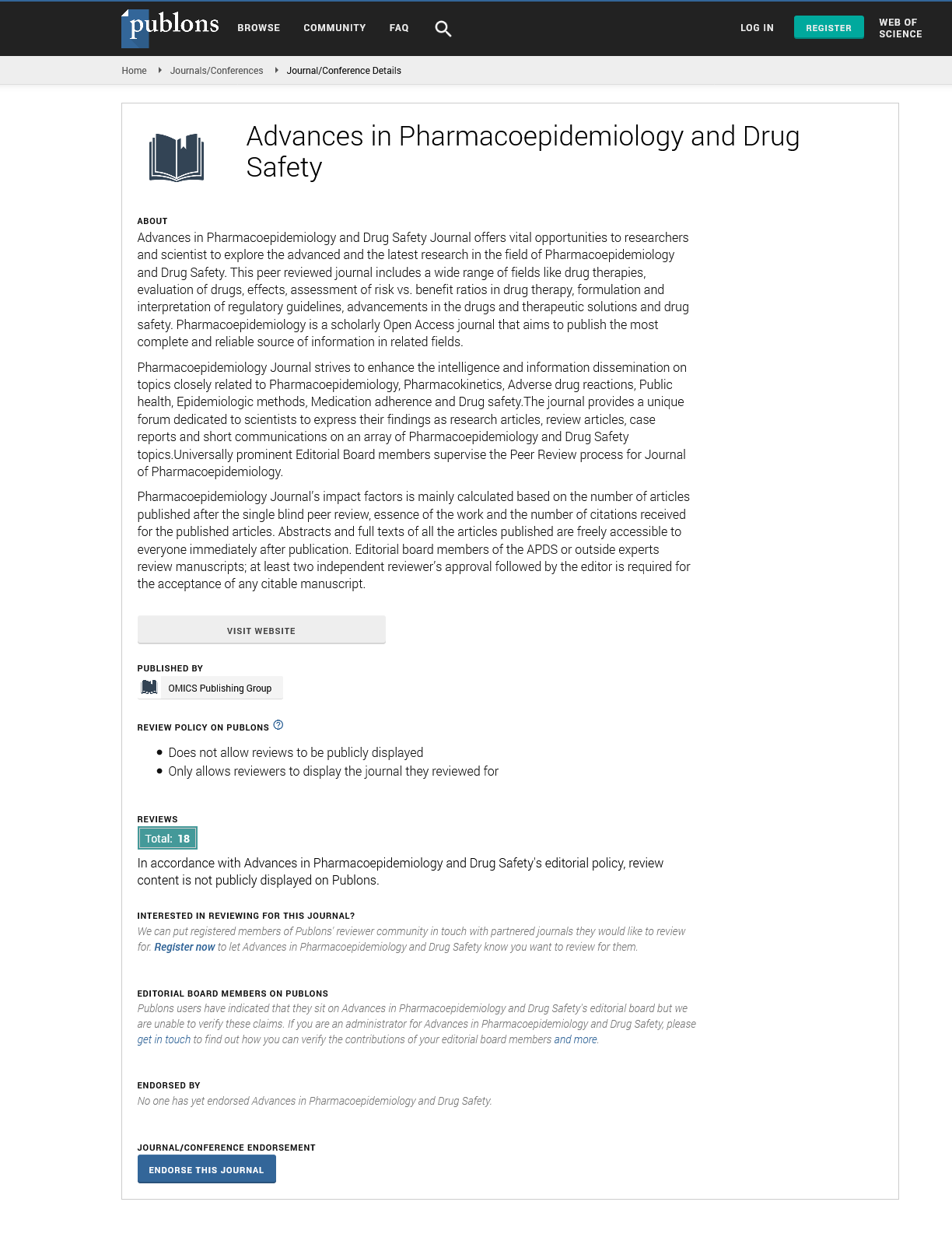Indexed In
- Open J Gate
- Genamics JournalSeek
- Academic Keys
- JournalTOCs
- RefSeek
- Hamdard University
- EBSCO A-Z
- SWB online catalog
- Publons
- Geneva Foundation for Medical Education and Research
- Euro Pub
- Google Scholar
Useful Links
Share This Page
Journal Flyer

Open Access Journals
- Agri and Aquaculture
- Biochemistry
- Bioinformatics & Systems Biology
- Business & Management
- Chemistry
- Clinical Sciences
- Engineering
- Food & Nutrition
- General Science
- Genetics & Molecular Biology
- Immunology & Microbiology
- Medical Sciences
- Neuroscience & Psychology
- Nursing & Health Care
- Pharmaceutical Sciences
Abstract
Examining Exposure Misclassification of Oral Bisphosphonate Therapy and the Associated Fracture Risk: A Cohort Study
Burden AM, Gruneir A, Paterson JM and Cadarette SM
Introduction: Using pharmacy claims data we previously identified exposure misclassification in pharmacy claims data that underestimated oral bisphosphonate compliance, particularly in long-term care (LTC). In this study we examined the impact of exposure misclassification in pharmacy claims data on estimates of drug effectiveness using osteoporosis pharmacotherapy and hip fractures as a case example.
Methods: We identified new users of oral bisphosphonates, aged 66 or more years, using Ontario claims data. Compliance was quantified by the proportion of days covered (PDC) and categorized into groups during a 365-day ascertainment period. PDC was calculated using observed and cleaned days supply values. Hip fracture rates were calculated using Cox proportional hazard models, adjusted for behavioral and fracture risk factors. Low compliance (PDC < 20%) was the referent. Analyses were completed overall and separately for patients in community and LTC settings.
Results: The rate of hip fracture was higher in LTC (2.4/100 patient-years) than in the community (1.0/100 patient-years). Following data cleaning, to adjust for exposure misclassification, the estimated benefit of high compliance (PDC ≥ 80%) on fracture prevention (HRobserved = 0.74, 95% CI = 0.66-0.83; HRcleaned = 0.65, 95% CI = 0.57-0.74) increased. Risk estimates were similar among community-dwelling patients (HRobserved = 0.68, 95% CI = 0.60–0.77; HRcleaned = 0.65, 95% CI = 0.56–0.75), yet differed substantially in LTC (HRobserved = 0.96, 95% CI = 0.73–1.26; HRcleaned = 0.64, 95% CI = 0.46–0.91).
Conclusion: Exposure misclassification can bias estimates of drug effectiveness. While minimal change was noted in the community setting where most studies are completed, large differences were noted in LTC where fracture risk was highest. These results highlight the importance of understanding and examining the potential for exposure misclassification prior to data analysis in pharmacoepidemiology, particularly when including LTC settings.

